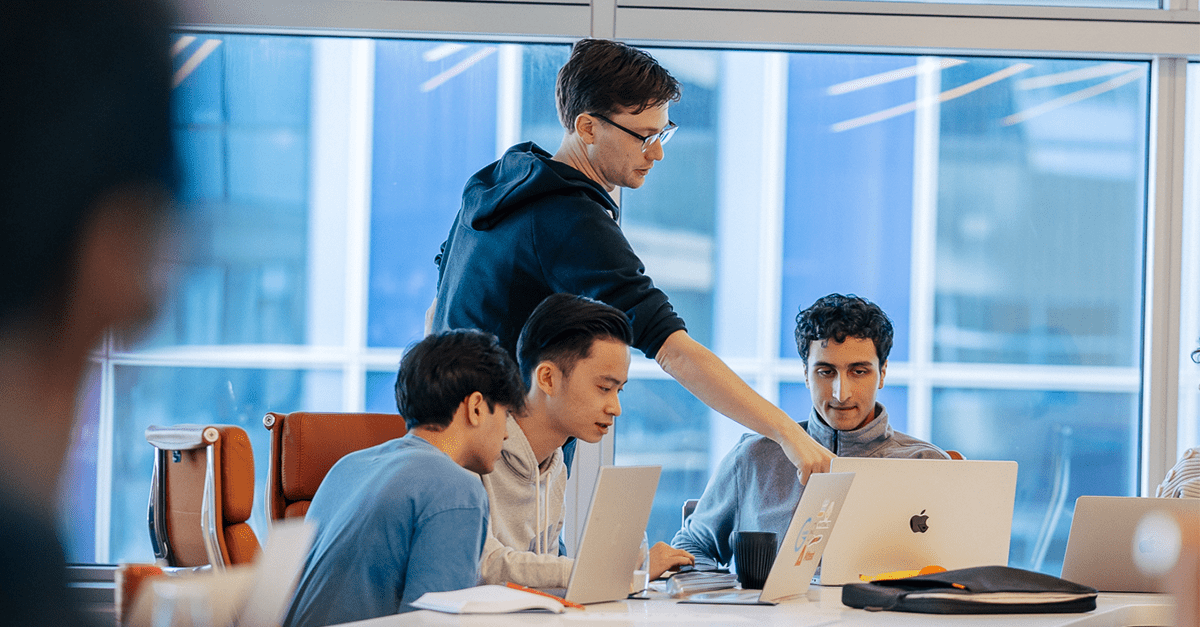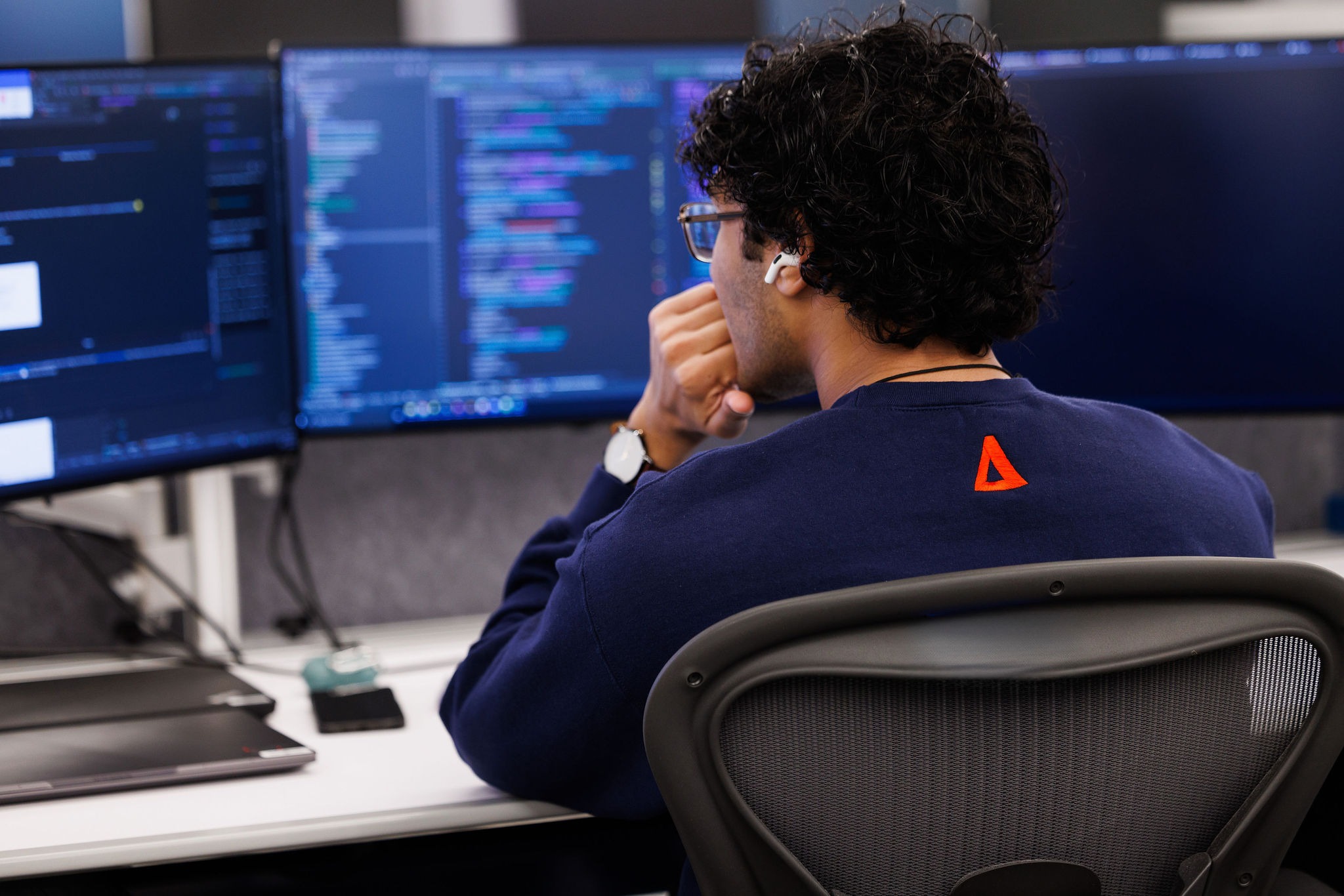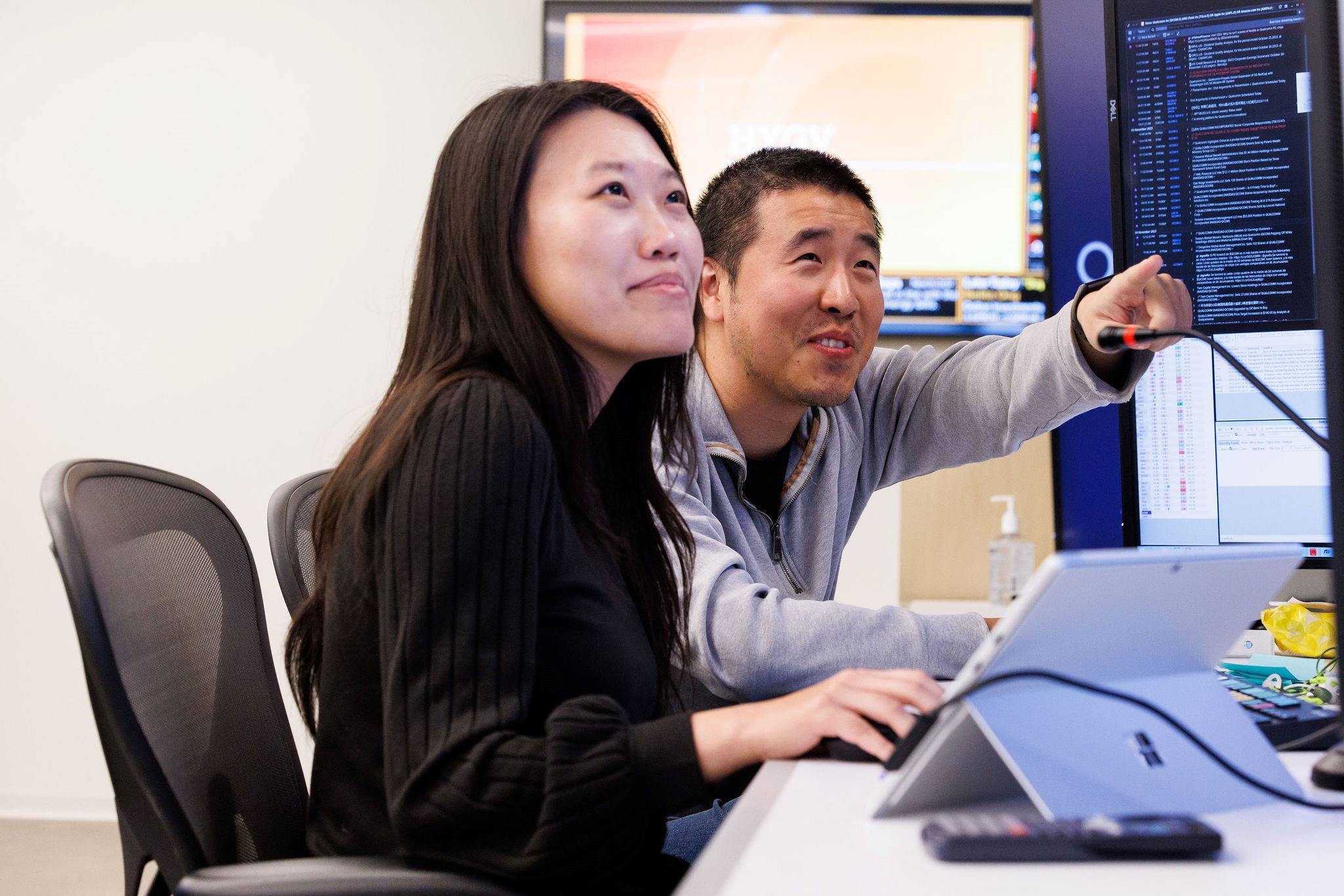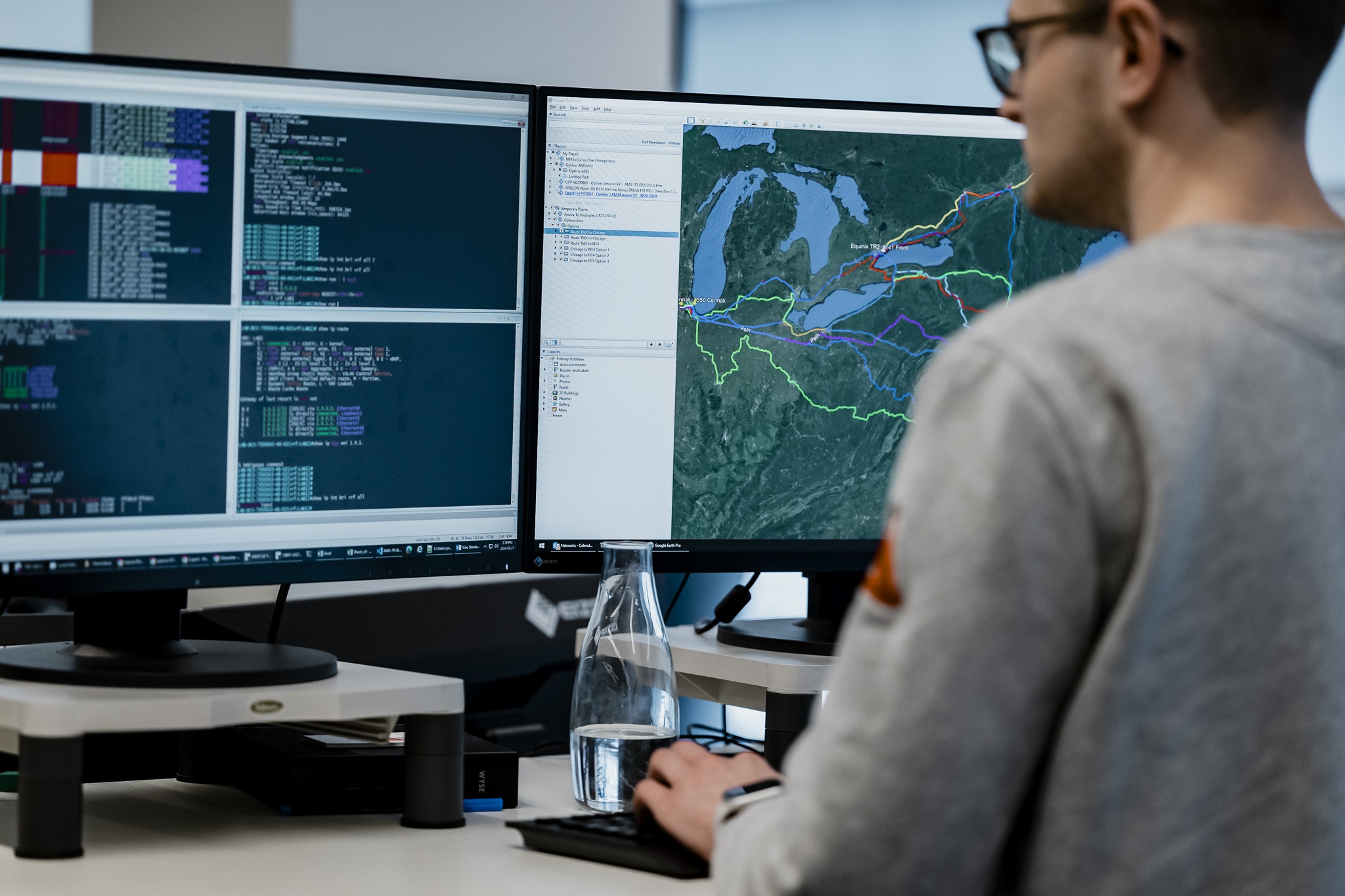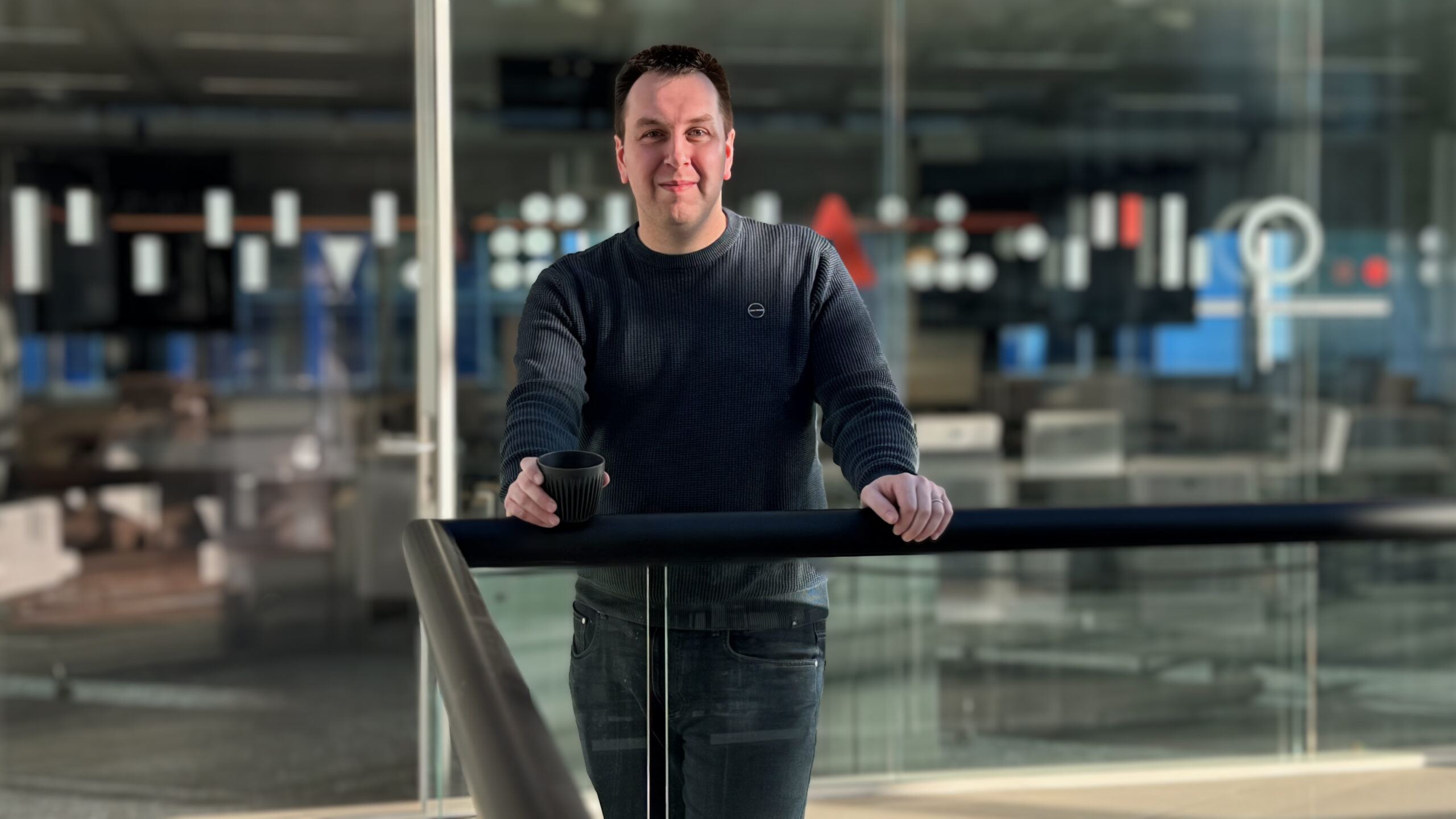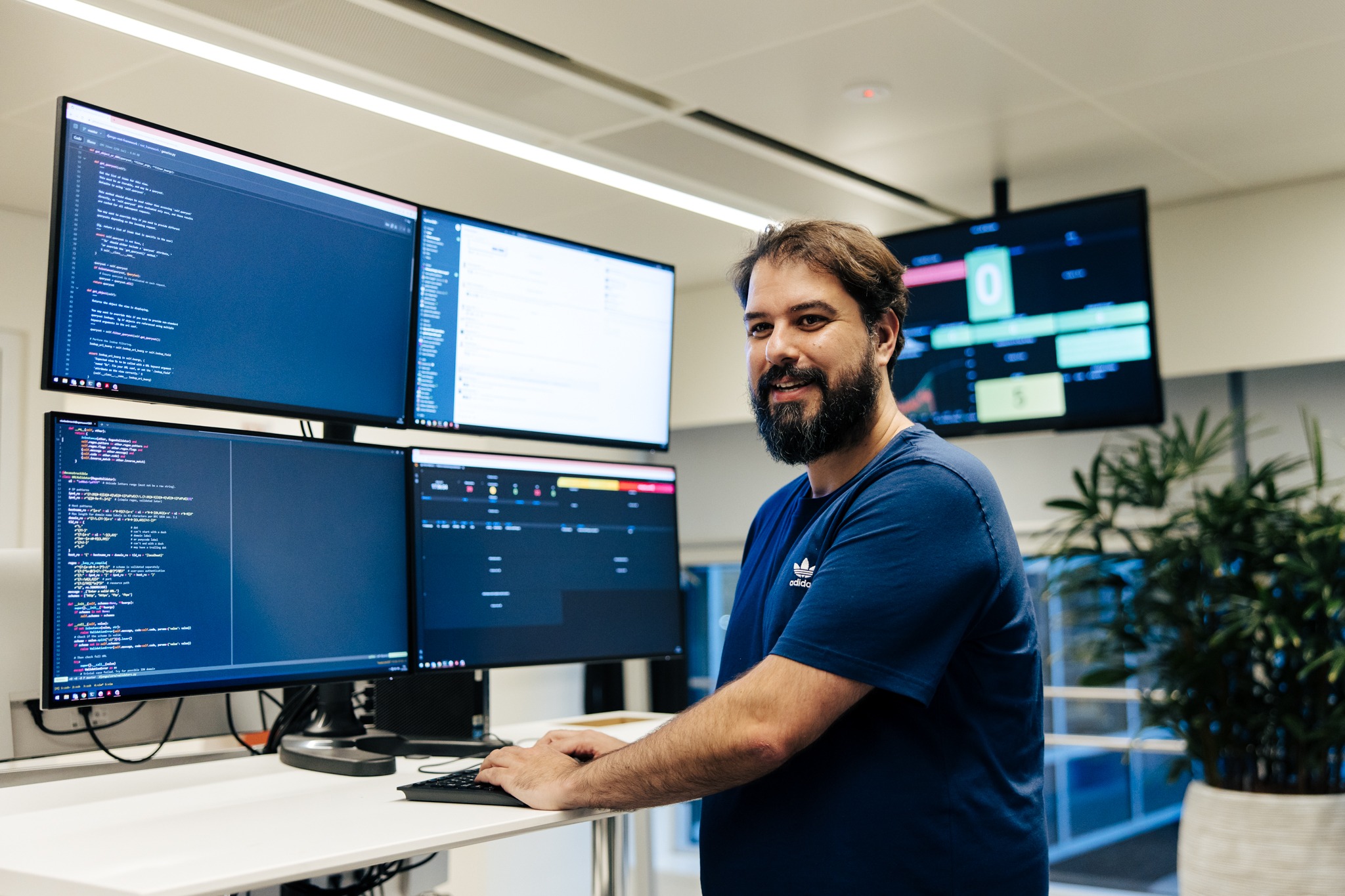Challenging the status quo: A conversation with Optiver Europe’s D&I Recruiter
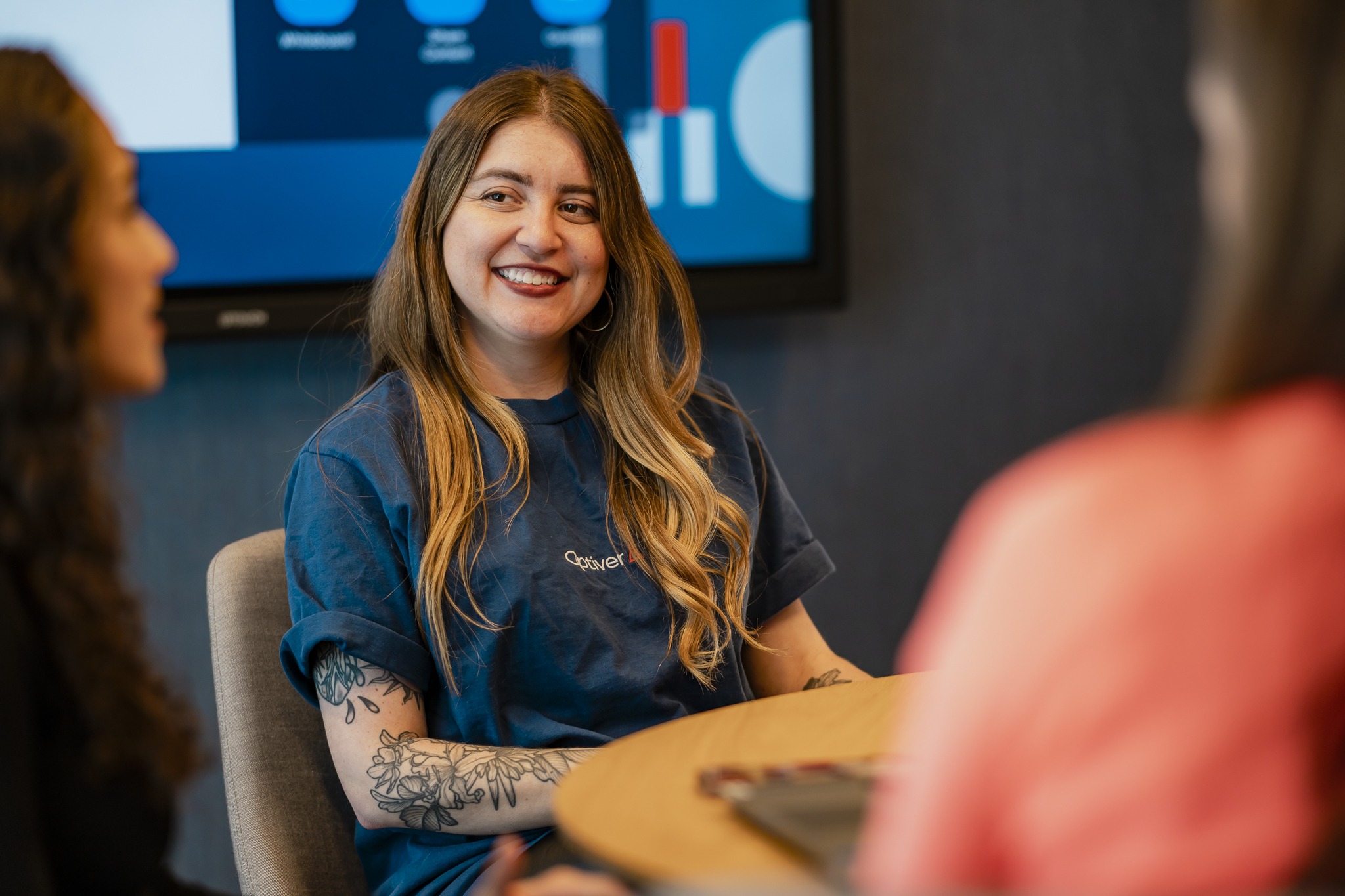
It’s no secret that workforce diversity is a major struggle for both the tech and trading industries. But as a tech-driven trading firm, that image just doesn’t fit us. At Optiver, we believe that diverse perspectives drive our success. We’re challenging the status quo to achieve a more forward-looking, inclusive point of view as a modern company that not only attracts a broad representation of top talent, but retains it sustainably.
We know that our strength lies in our diverse and unique perspectives. The greater variety of backgrounds that we enlist to collaborate on complex problems, the better we are at solving them. As an example of our commitment to providing equal opportunity, we are also taking an active role as industry leaders to encourage more young female-identifying students to pursue STEM studies and careers, and to foster greater representation and support for women in STEM fields.
To provide an in-depth look at these efforts in Europe, we sat down with Bruna, a D&I recruiter at Optiver Europe, to discuss her own D&I journey, Optiver’s D&I outlook, and the future of diversity and inclusion for the tech and trading industries.
Q: As a D&I recruiter, can you describe your role and what inspired you to specialise in diversity and inclusion?
As a D&I recruiter, my role is building, implementing and driving Optiver Europe’s D&I recruitment strategy. In Europe, our aim is to challenge the status quo by broadening existing talent pools to create a more inclusive and dynamic workforce. This approach not only addresses historic representation imbalances and supports future growth, but also meets and exceeds the higher expectations that young top talent have for their potential employers’ culture, as well as the responsible corporate governance that society increasingly demands. Personally, I strongly believe that embracing diversity enriches teams with different perspectives, ideas and approaches, and I have consistently advocated for this throughout my career. Working at Optiver—a company that shares this belief, aims to enhance its efforts in this area and always supports employees in making a real impact at the company—led me to specialise in diversity and inclusion.
Q: Can you share any personal experiences that led you to value and advocate for diversity and inclusion in the workplace?
As a woman whose career has been spent working in mostly male-dominated environments, I have consistently observed the need for significant steps towards fostering true diversity and inclusion in the business world. Having had the opportunity to break through the barriers to join these traditionally exclusive workplaces, I have always aimed to leverage this inclusion to help open doors for others aspiring to similar opportunities. Now, working in recruitment—literally the gateway to these opportunities—I see a tangible way to foster this change.
Q: What are some of the main challenges you face in D&I recruitment, particularly in typically male-dominated industries like tech and trading?
Historically, the finance and tech industries have not had a strong representation of female talent. Our primary challenge lies in redressing this perception and showcasing how these industries and particularly Optiver have evolved to become more inclusive.
Additionally, tech-driven trading relies heavily on a STEM-oriented workforce. Given that gender representation across STEM fields of study remains unbalanced, attracting a balanced pool of applicants remains a challenge in our efforts towards diversity and inclusion in recruitment.
Q: What steps do you think are crucial for accelerating progress in tech and trading?
- Commitment from the company to tackle this challenge: Dedicating resources and holding senior leaders accountable are the first steps for an effective D&I strategy;
- Understanding that results will only be different if we do things differently: It’s crucial to challenge established processes and adapt when necessary;
- Partnerships with experts: At Optiver for example, we have enlisted external D&I consultants to be part of both our Global D&I Committee as well as our regional committees. We also engage regionally with talent agencies and student societies focussed on diversity;
- D&I training across the organisation: Effecting change cannot be limited to recruitment colleagues and talent sourcing methods; everyone—at every level of the company—must be involved in the efforts to ensure an inclusive environment;
- Tracking the progress through data and metrics: D&I must be embedded into the business, so having an analytical approach is very important to understand the current picture, the objectives, and how to measure success.
- Remaining committed to our EEO policies: We believe that our continued commitment to providing equal employment opportunity to all qualified individuals applying to and employed by Optiver is an essential part of our D&I strategy.
Q: How do you engage with diverse talent pools to attract a wide range of candidates to Optiver Europe? What are some examples of the recruitment strategies/initiatives you are spearheading?
To effectively attract a diverse pool of talent, it’s essential to adopt specific actions. Simply waiting for diverse candidates to organically apply for our open roles will not suffice. Therefore, targeted strategies and initiatives are crucial to reach our goals. It’s equally important to recognise that engaging with candidates from underrepresented groups can take time and is part of a long-term commitment. Some of the initiatives we are working on in Europe are:
- Proactive sourcing: engaging potential candidates directly through a personalised approach. LinkedIn serves as a primary tool in this strategy, enabling us to connect directly with prospects;
- Agencies: collaborating with specialised talent agencies focussed on D&I, to help source more diverse candidates from our target audience for the recruitment funnel;
- Events: engaging in external events tailored to our focus demographics, and organising in-house events in collaboration with partners.
- Programs: developing programs with a focus on upskilling for underrepresented groups, for example, our “Women in Tech and Trading – Insight Days”;
- University societies: forging partnerships with diversity-focussed societies at our target universities. These societies are a great way to engage with our target population, while we contribute to their students’ personal development goals.
Q: What strategies do you employ at Optiver Europe to identify and overcome potential biases in the recruitment process?
Enhancing our recruitment process to minimise bias is an ongoing initiative, and we acknowledge that there are still areas for improvement. Here are some measures we’ve already taken in Europe:
- D&I training with an expert: Our recruitment teams and interviewers receive training from an external D&I expert. The purpose of this initiative is to raise awareness about biases, understand their impact, and adopt strategies to mitigate them during the recruitment process.
- Diverse hiring panel: At Optiver, our hiring decisions are made in a collaborative way through panels that include everyone involved in the recruitment process, which already helps in reducing bias. We ensure that these panels reflect a broad and balanced representation of perspectives from our business, reinforcing diversity not just during the recruitment process but also in decision-making.
- Data monitoring: Keeping a close eye on our recruitment data allows us to understand where we might be losing diverse candidates within our pipeline. This helps us to identify areas for improvement so that we can initiate measures to correct and strengthen them.
- Expanding talent pools: When we think about trading, the existing pools that firms like ours have historically relied on for talent tend to be dominated by an almost stereotypical candidate profile, leaving many groups underrepresented. Recognising this, we’ve made concerted efforts to diversify our talent sources. This includes engaging with a wider range of initiatives and partnering with organisations known for their diverse representation, thus broadening our search for talent beyond conventional channels.
Q: What do you envision for the future of diversity and inclusion in the trading and tech industries? What changes or developments would you like to see?
Bearing in mind that D&I work is a continuous process that requires constant attention, I expect to see the trading and tech industries devote increasing levels of resources towards D&I initiatives in the coming years, taking deliberate steps to foster more diverse and inclusive environments. I would like to see these efforts result in workplaces where every employee—regardless of background or personal characteristics—feels safe, valued, and empowered to share their ideas and contributions. By embracing these changes and developments, the industries will not only achieve greater equity and inclusion but also drive forward-thinking solutions that reflect the diverse world in which we live.
